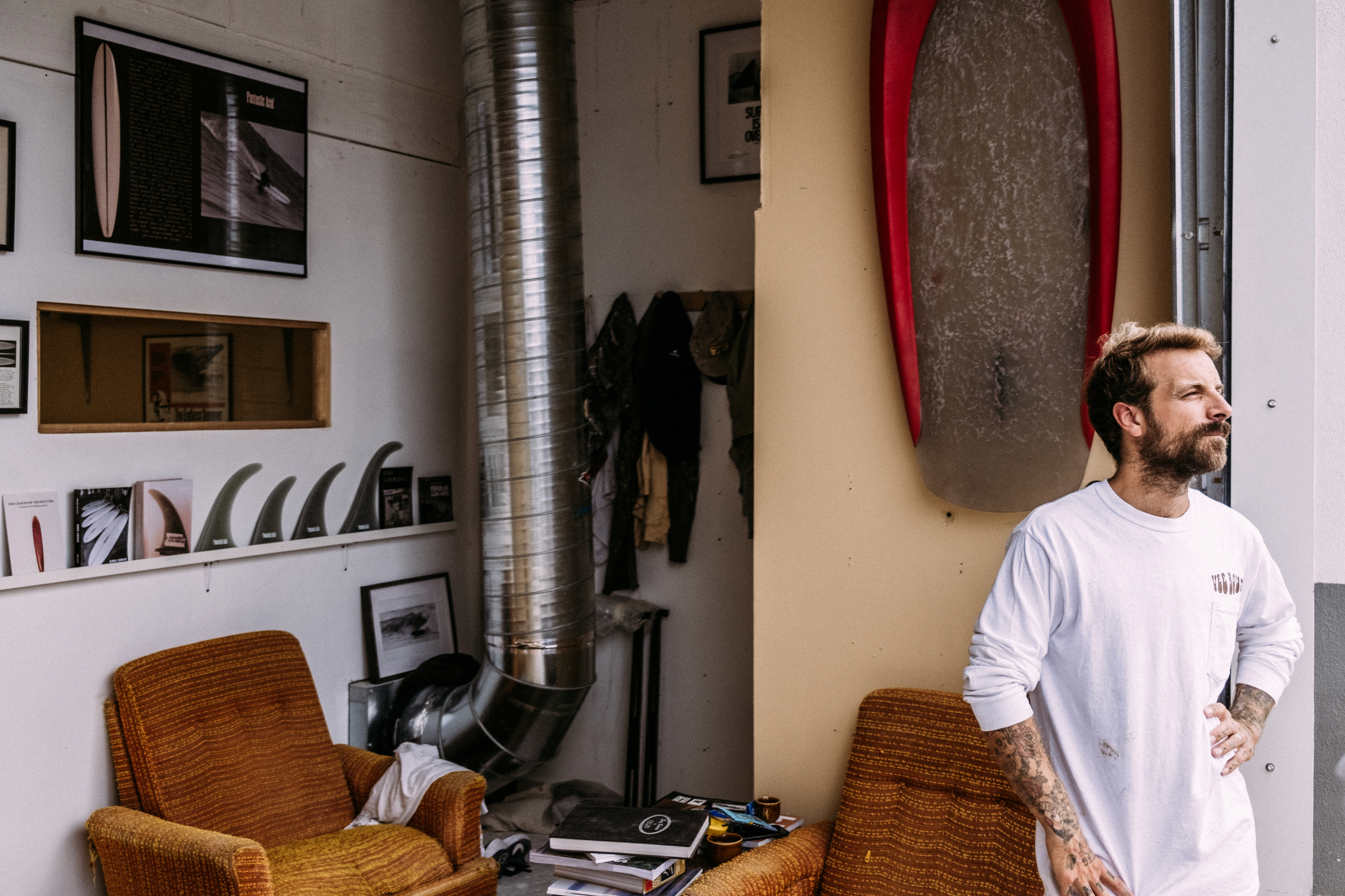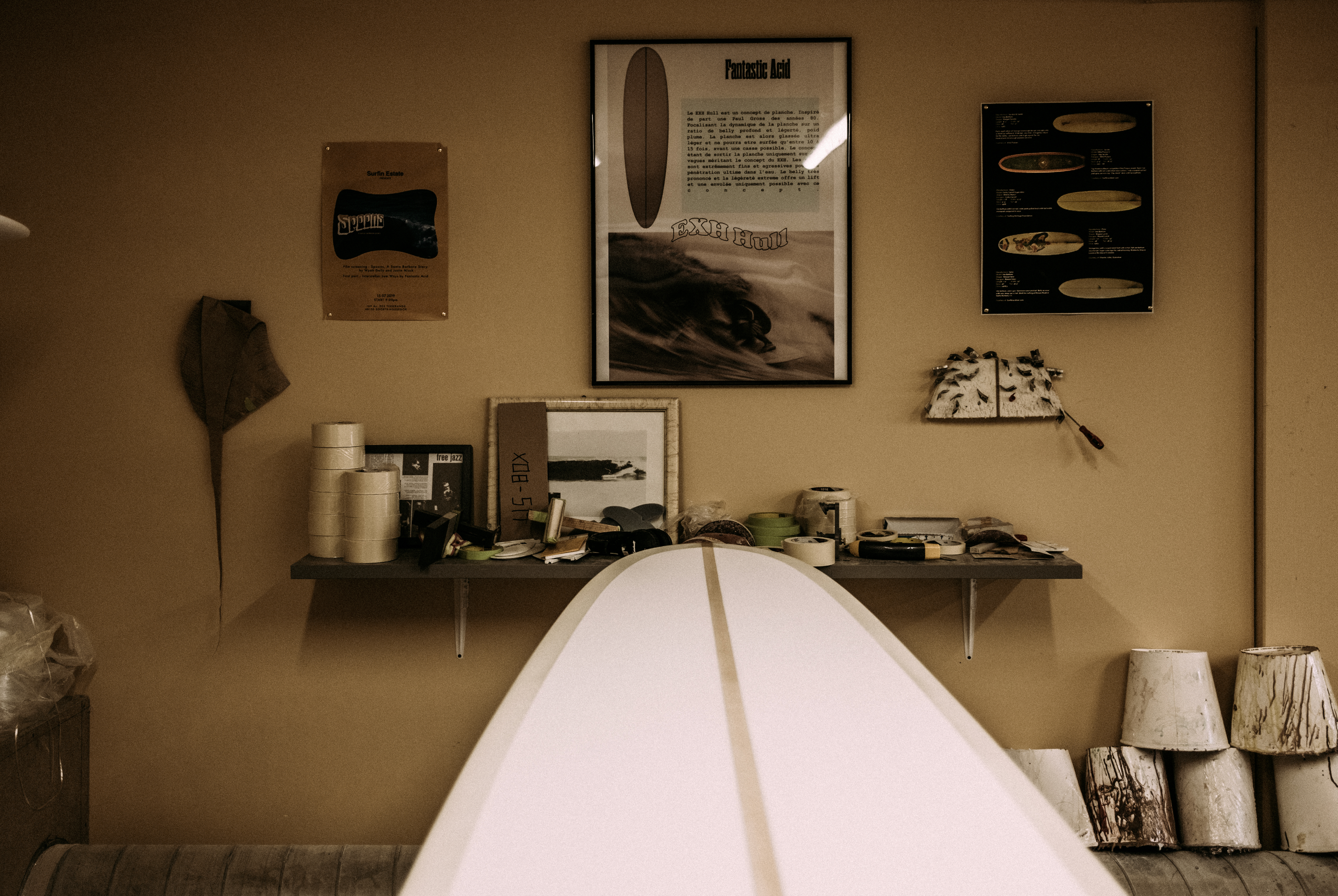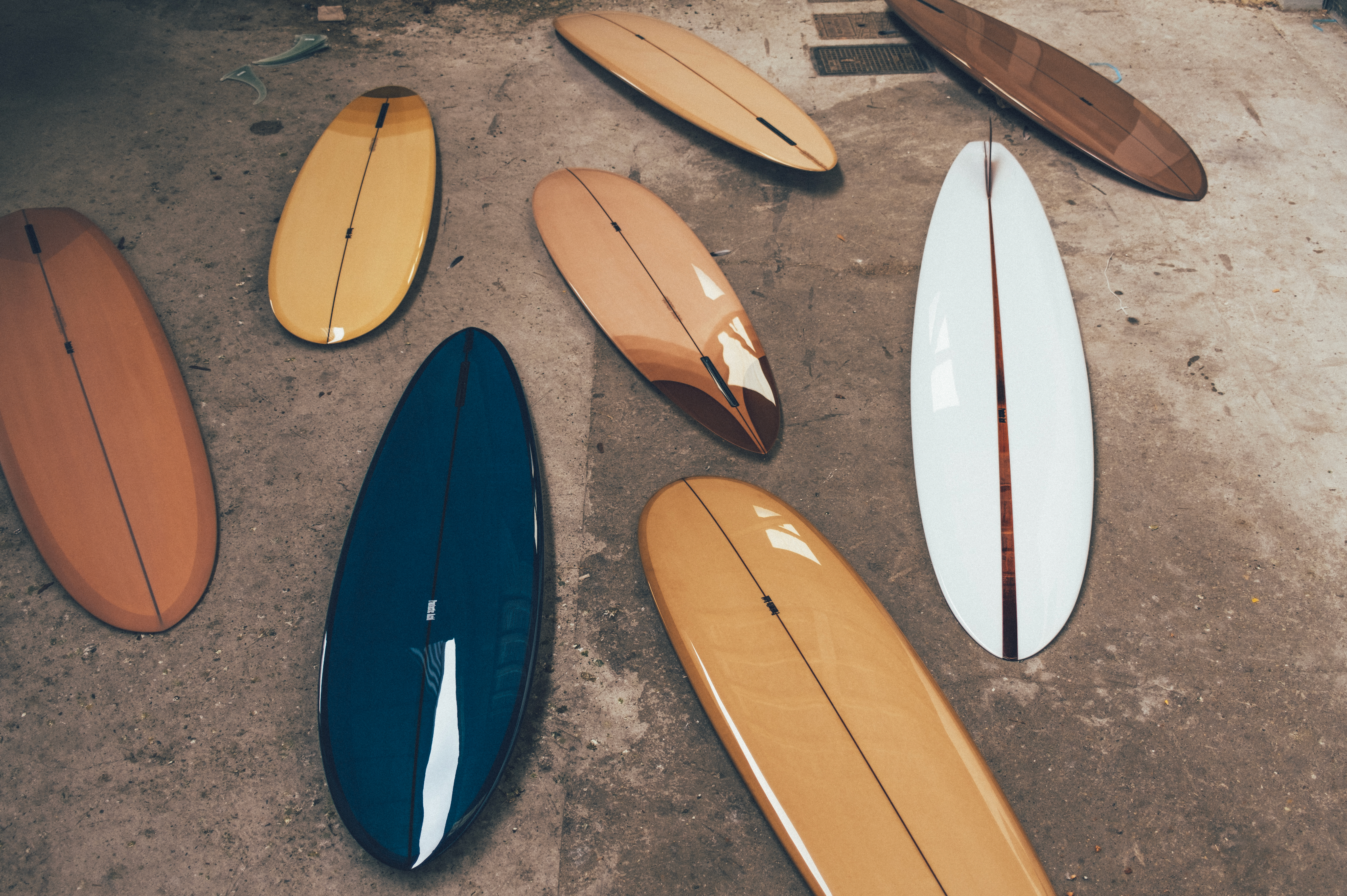Have you heard about ‘The Hull’?
If you haven’t, you will be hearing much more about it from us as well because this design from the late 60’s early 70’s is evolving to blow your mind and take you out from your surfing confort zone. Want to read more? Here we go.
Making a Comeback: The Hull
As a Fish design has gone through a revival the last few years, The Hull is doing just the same thanks to a small group of surfers and shapers, one of them being Tristan Mausse, from Fantastic Acid.
The Hull “cult” status will be good for shaped waves and a disciplined approach.
If you want to, not only taste but feel, savor and experience a total different approach on surfing due to positioning, wave shape and flow lines, keep reading and be prepared to be stoked and longing to make one of these Hulls, your next best friend.
Displacement Hulls
We really wanted to offer you Displacement Hull designs by Fantastic Acid and the one you see here is one of the several you can take home.
However, let’s elaborate a bit more since we could say tons about these beauties.
The Displacement Hull design is a bottom (belly or convex) contour and planing surface design that can offer a very organic, flow and speedy feeling when riding the wave.
However, in order to offer that kind of feeling, we should gift the design with the right riding style and wave conditions.
Riding a Displacement Hull
The Displacement Hull, instead of planing up on top of the water like a regular flat or concave bottom contour, it plows through and parting the water.
Yes; The faster you go, the higher the speed, a displacement hull’s tail will sink down lower due to the “hole” created in the water as you move forward on the board.
So, the more displacement, the more control you have in the water but you need to keep an eye on the speed so you don’t end up like feeling inside a submarine, meaning, under water. It’s all about balance.
So, how do you ride it? It is a bit tricky, but once you get the hand of the adjustment, it is really rewarding. Instead of leaning back on the tail, you surf off the front foot burying the rail and letting it go.
Although new displacement hull designs will perform in a varied range of waves, they can also offer a great day of surfing in smaller surf. Why? Because surfing through the water takes less effort and energy than planning on top of the water.
The feeling you get on a displacement hull is more organic. You are more involved. You become one with the elements.
Be Ready to Feel Like Surfing Through The Water
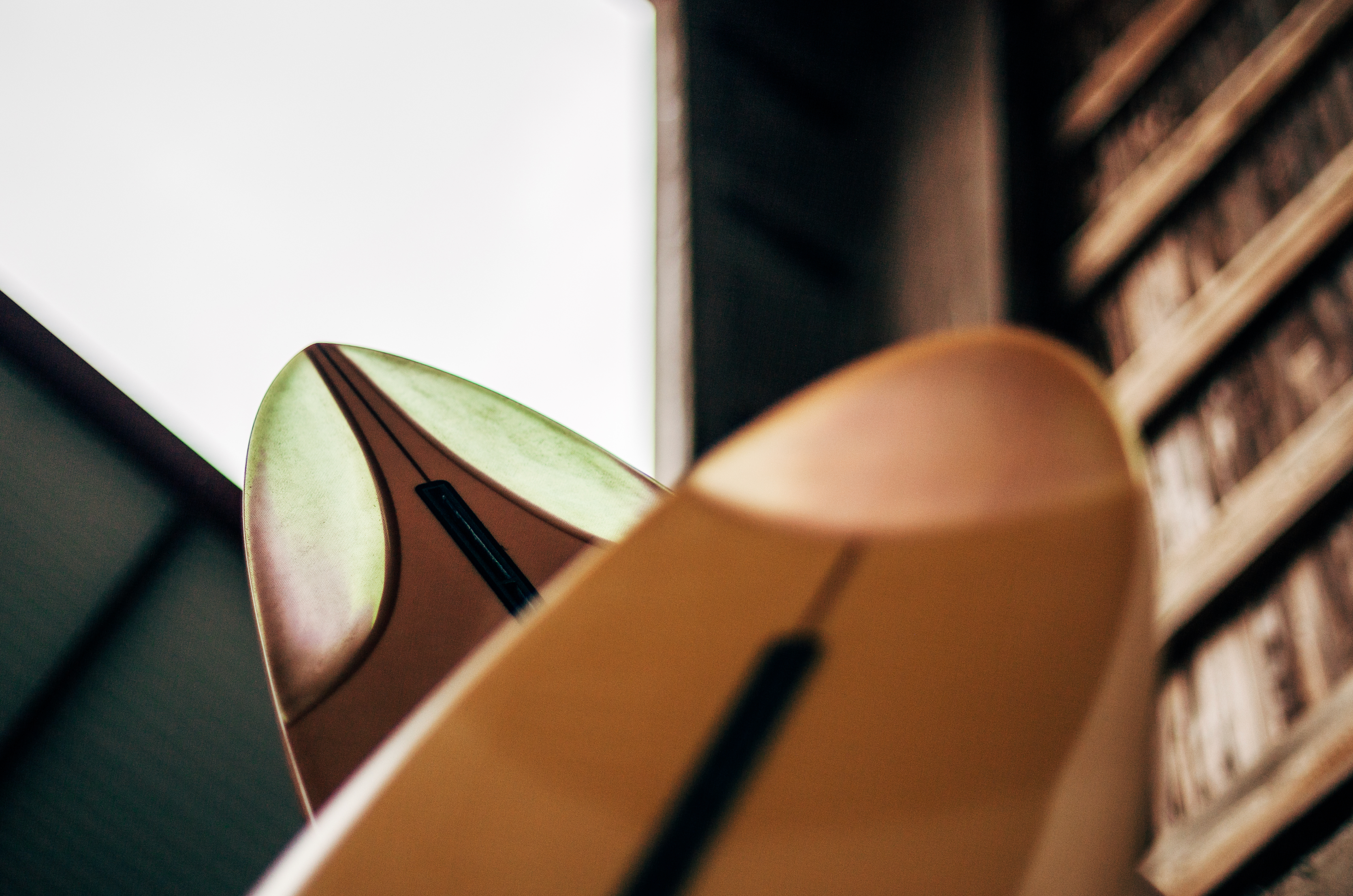
Tristan Mausse is the ♥️ of Fantastic Acid
Tristan Mausse is a surfer and shaper that focuses his efforts in hand shaping Displacement Hulls, and only Displacement Hulls, inspired on the 70’s hulls. His designs are born out of self experimentations with the liquid element, its harmony and dynamics of the waves in Biarritz, France, where he actually lives and surfs mostly everyday.
He fell in love and was irremediably caught up with Hulls while working as a ding repairer as a teenager with a Greg Liddle to fix. In his own words, with his second time around, he was “hulled by a Californian shaper Andreini”, and there was no going back from there: years and years of science, theory, Greg Liddle, Kirk Putnam, Klaus Jones, Marc Andreini, Robin Kegel, Georges Greenough, Carl Lamaitre … He still is inspired by them.
Ended up in Bali shaping his own hulls and surfing them; applying what he learnt year by year, being this last part key for the glassing brand FANTASTIC ACID to be born. Now it has more than 10 years.
About Fantastic Acid
«Fantastic Acid is a contemporary entity, driven by intense surfboards designs from the 70’s era. The fruit of experimentations and researchs about Displacement Hulls.
Boards with an unusual dynamic, generating velocity and smoothness. Radicals trim. Long radius turn. That’s the product of a whole life devoted into
building surfboards, surfing, endless movement, free improvisations, hard jazz, flex fins, transitionnal volumes, volan.... An eternal approach of handshaped surfboards.”
Tristan Mausse
· Antistatic Hull ·
Flex Tail | 6’8”
Regular | 7’0” & 7’4”
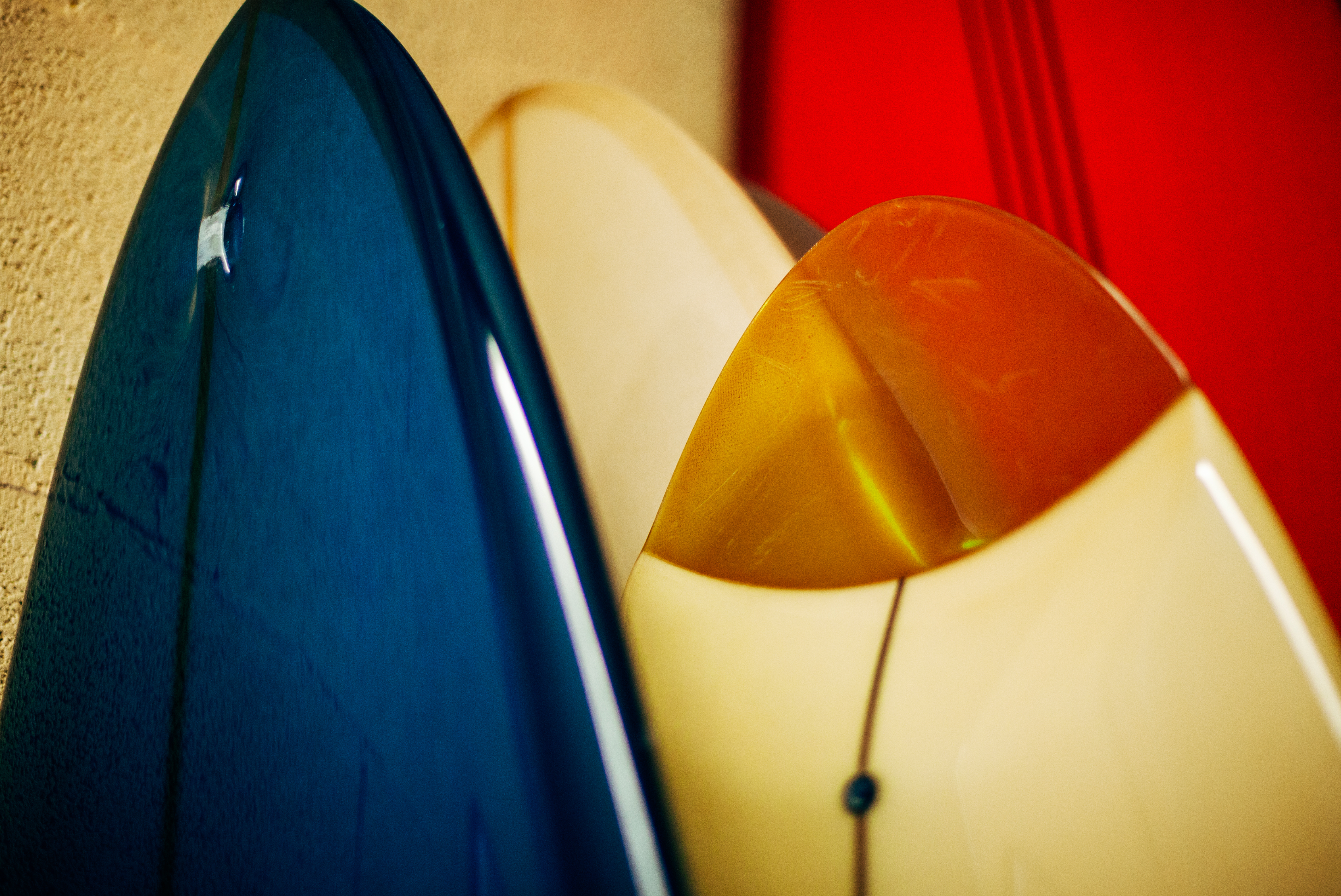
The King for Hollow and Powerful Waves
In Tristan Mausse’s words: "Antistatic Hull, antinomic design of the Paralleler Hull, was designed to tackle powerful "tube" waves. With a pronounced pintail, very advanced wide point, a fast outline and very stretched curves.”
This design is naturally surfed far above the wide point, and despite this extreme position on the nose, the surfer retains drive.
PINTAIL | The pronounced pintail allows to retain more control and handle speed easier that with a wide tail since it reduces the volume area on the rear third.
While on the face, the pintail has the advantage of being under the total influence of the wave: less width and minimum surface will enable the ‘sinking’ and stabilizing, allowing the board to follow and maintain its direction with better control.
POINTY NOSE W/ LESS SURFACE AREA | Not having part of the front rail inserting itself in the water and engaging in an unwanted curve, reduces catch on late take off’s.
RAILS | The rails are slightly lower and boxier than on a classic hull.
FINS | Flex fin with a wide base and a depth of 9'25 inches is the best suited for this hull. The position varies depending on the size and power of the wave being surfed but, generally, the trailer edge of the fin is 12 inches from the tail.
:::
· Rounded Hull ·
Flex Tail | 6’6”
Regular | 6’10” & 7’2”
Good for everyday, The Rounded Hull is the classic design of hull with wide point,
pushed one foot above the centre of the board, that you will want to have in your quiver.
Authentic. Timeless. The Classic Hull
TAIL | The tail tightens and stretches in the last foot, allowing to maintain the width and, therefore, floatation on the rear foot placements.
While having a narrower tail for better grip and versatility in turns.
BOTTOM | The most classic of hull bottom shapes, with a pronounced belly vee over the entire front two-thirds of the board, transitioning to a flat bottom in the rear third and behind the fin.
The taut and almost flat tail rocker increases speed, due to the more present gliding surface. The nose rocker is much more pronounced.
· Parlementia Hull ·
9’6”

This surfboard was made specially for Parlementia’s wave, characterized by being fat and slow; a wave with amplitude, so this hull is made for big take off and long bottom turn.
This Hull Gun for Parlamentia speaks for itself and Tristan Mausse describes his creation like this:
“I have strectchened the outline, and made it narrower, 21 3/4 wide, the wide point is located on the middle of the surfboard, it's also the point where the belly vee on the bottom softly stop and change to a flat bottom shape, the belly vee is then pretty deep on the front part of the surfboard. With 3 3/4 thick the low rails are soft and thick, but softly tappered to get a pinchee entry. The rocker is a bit more pronounced on the nose and the tail get a little kick, but the middle part of the surfboard's rocker get flat and moderated for a maximum glide. the Wedge stringer is supposed to give more weight on the nose and help to "fall" in the wave easily, and to keep the nose stable.”
The final objetive of this hull is to “keep that deep bottom connection to the surface with the belly and to keep the special smooth feeling of a hull on that big wide wave.”
The Secret is Behind the Details
THE FIN | We will let Tristan Mausse to tell the story of the fin himself:
“The fin is a test and I designed it with the help of my good friend Jean Penninck during a late night at the factory, for that special board we got inspired between the Tom Blake's skeg or the Pat Curren's gun fins but with a touch of "Greenough" and a bit of Wayne Lynch's keel fin. The 6 1/2 inches deep will hold enough that super narrow tail and drag less water on the take off, but we add a super wide base to lock the board during the turns. The first 2 inches of the fin is flex but quickly become wide so might stay away from vibrations. The front part of the fin is thick and round. Heavy glass job of course.”
:::
· V-Bottom from 7’6” to 9’0” ·
8’2”
Providing the same displacement as a convex bottom while providing the same advantages of a planing bottom (flat), the two different angles that the planning surface divided into two provides are worth trying out.
This design is more oriented towards a more extreme version of Vee-bottom by accentuating the difference between the nose and the tail and removing the outline of the parallel rails.
A parallel outline over too great a length can make turning or changing direction difficult and "long". However, a more "disproportionate" outline with an accentuated width from the wide point to the tail of the board will increase the pivot point at the back foot and help with tighter turns. Likewise, with a more refined nose, the board will be more manoeuvrable.
The extremely deep vee, revealing two distinct flat surfaces, is pushed up to 3 feet from the tail, a little above the fin.
Deconstructing a Unique Beast
RIDING | The bottom shape then evolves into a flat surface, located in the middle of the board. It is also where the widest and thickest point coincide. It is therefore the key position on the board where the surfer will be when he goes into "trim" mode. Thanks to the extreme vee panels, the surfer will be able to stay on this sweet spot with his feet together, while steering the board thanks to "heel and toe" pressures.
It is only for cutbacks that the surfer can move his foot back slightly towards the fin to radically swing the board from one rail to another.
An extremely deep fin of 11 Inches, with total flex due to the volan and the narrow tip, will allow the wide tail not to slide and above all will offer a substantial lift, which will allow the surfer to regain his line after each cutback.
VEE-BOTTOM | I analyzed that a deep vee located at the tail on tight and low rocker tails caused a braking effect due to excessive water dragging. (As with hot curls, but which in this case, was put to good use to compensate for the non-existent fin.) I then started shaping my vee-bottoms with neutral rockers, but turning the blanks back to front and shaping my tails in the nose of the blank and my nose in the tail of the blank. So using the rocker of a nose for my tail, thus allowing me to have a kicktail, which would therefore be enabling the deepest part of the vee to be out of the water. The vee would then only be in the water when needed, once the surfer moves his foot back towards the fin. Once the surfer returns to the sweet spot, in the middle of the board, on the flat surface and no longer using the vee, it would be once again out of the water thanks to the kicktail.
'Glass Shops' by Tristan Mausse
This is no ordinary book; it is a book about the passion, knowledge, journey and love that Tristan Mausse is still experiencing.
Not in vain Tristan Mausse uses 480 pages to document his steps and travels. This book is an open window that invites you in through his words, work, more than a 1.200 pictures, drafts ... It is like getting inside the head of someone's most intimate secrets, longings, desires and passion to know, live and share about the Hull's tight-knit community and surfboards.

